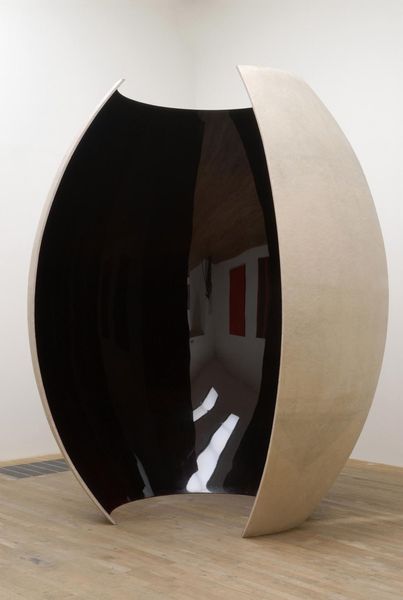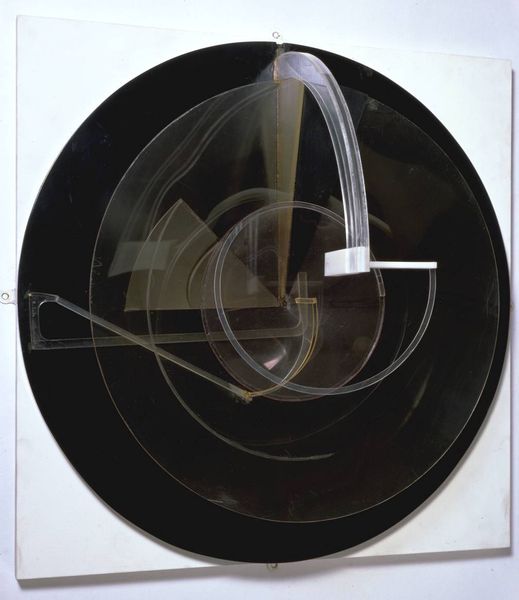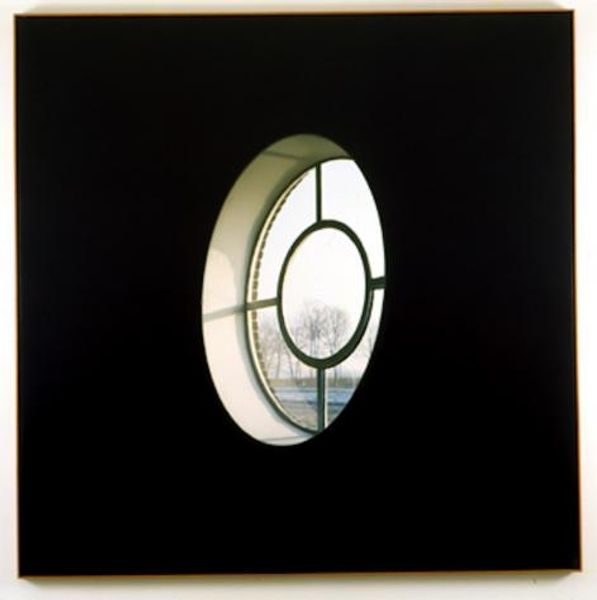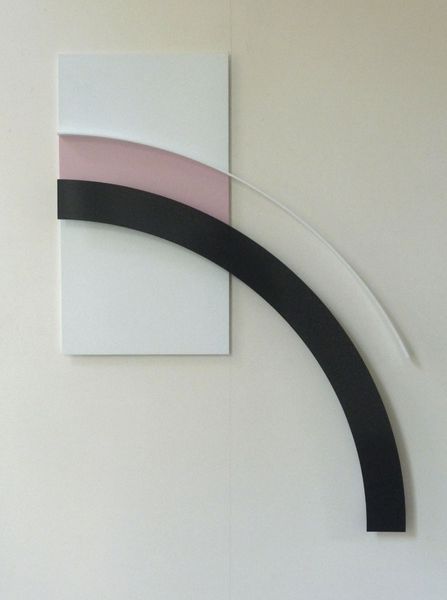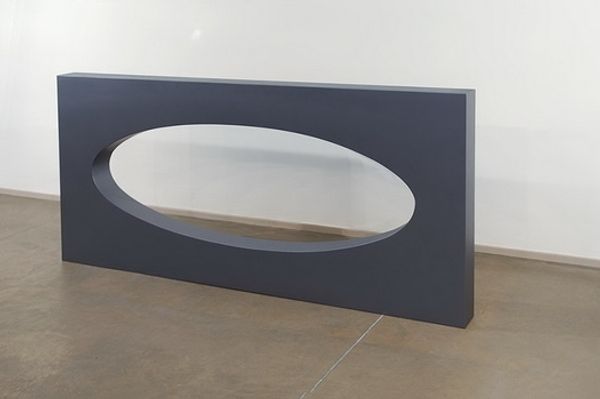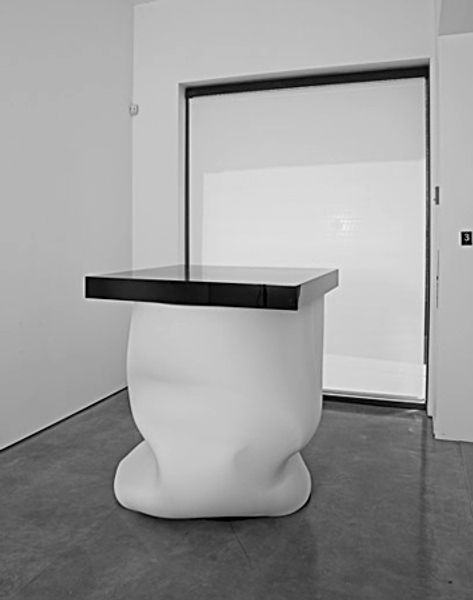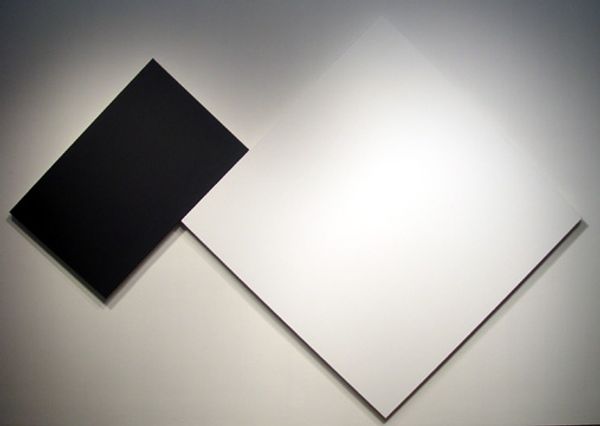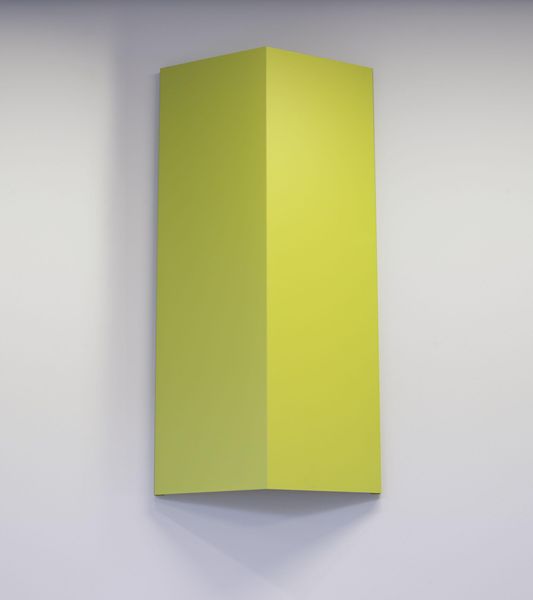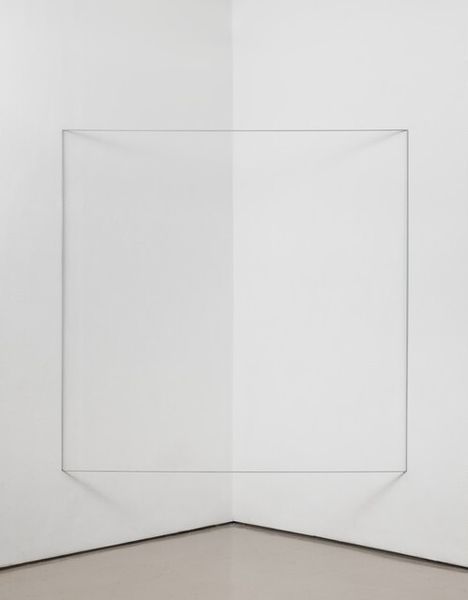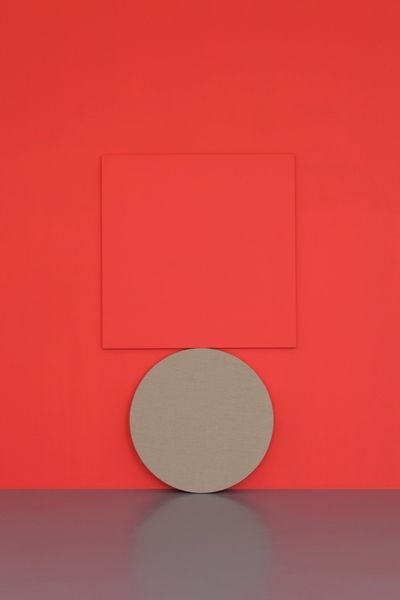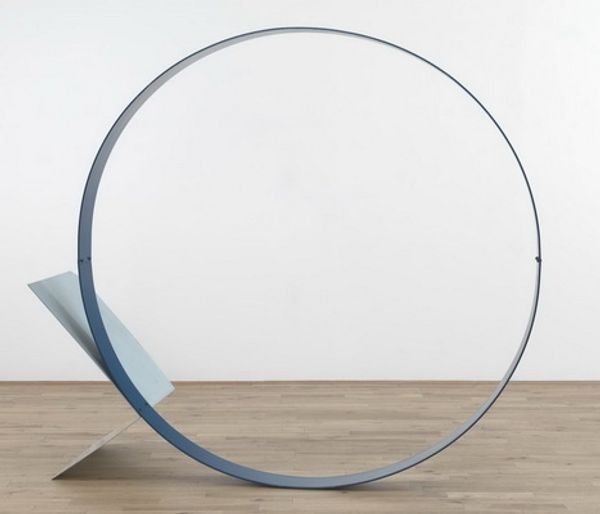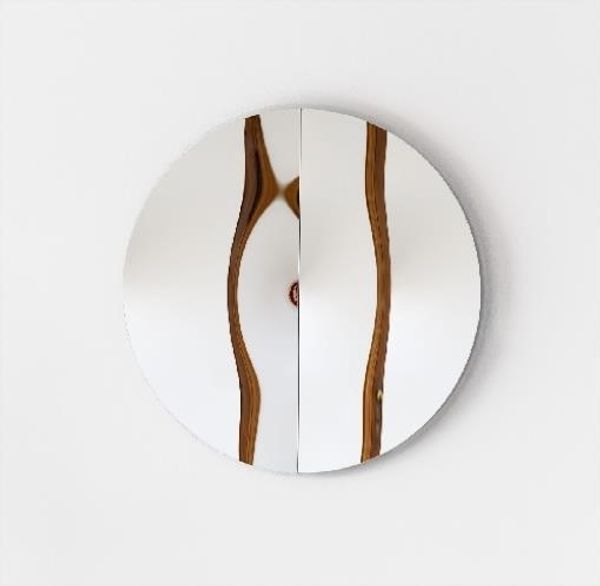
Dimensions: object: 1710 x 1710 x 315 mm
Copyright: © Cerith Wyn Evans, courtesy Jay Jopling/White Cube, London | CC-BY-NC-ND 4.0 DEED, Photo: Tate
Editor: Here we have Cerith Wyn Evans' "Inverse Reverse Perverse," from the Tate Collections. It's quite a large circular mirror with an unusual wooden section at the top. What do you see in the way Evans uses reflection and form here? Curator: The work is compelling precisely due to its manipulation of visual space. The mirror, inherently a tool of representation, is disrupted by the wooden segment, creating an interplay between the reflected and the opaque. Editor: So, it’s less about what it reflects and more about how it plays with our expectations of a mirror? Curator: Precisely. The composition calls attention to the materiality of the mirror itself, its shape, its surface, rather than its function as a mere portal. Editor: I see. It’s about the artifice of reflection. Thanks for clarifying! Curator: Indeed. A deconstruction of perception itself.
Comments
tate 7 months ago
⋮
http://www.tate.org.uk/art/artworks/wyn-evans-inverse-reverse-perverse-t07935
Join the conversation
Join millions of artists and users on Artera today and experience the ultimate creative platform.
tate 7 months ago
⋮
Inverse Reverse Perverse is a large concave mirror, positioned on the wall so as to reflect the viewer. Its highly polished surface, like the inside of spoon, presents a distorted reflection that varies depending on the distance from the sculpture. As the viewer moves towards the mirror, the reflection flips from an inverted likeness to a magnified, elongated image. The sculpture is a sleek, minimalist version of a funhouse mirror, whose disfiguration of the human form both entertains and horrifies.
